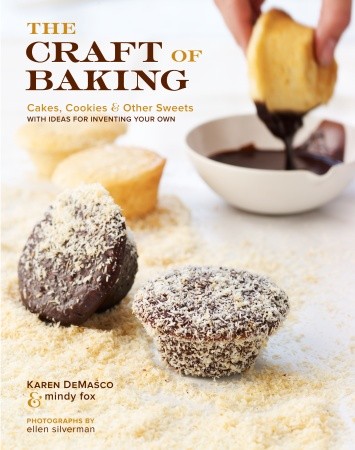Green Pancakes with Lime Butter is a deliciously eccentric recipe by the acclaimed British restauranteur and celebrated author, Israeli chef Yotam Ottolenghi. In his fabulous cookbook 'Plenty: Vibrant Vegetable Recipes from London's Ottolenghi', the author offers a wonderfully versatile collection of mouthwatering dishes that elevate vegetables from their humble side-dish status to superstar prominence, with everything from root vegetables and mushrooms to legumes and grains. Highlights include leek fritters, lentils with broiled eggplant, quinoa and grilled sourdough salad, and a stunningly gorgeous salad he calls tomato party that combines multicolored tomatoes, couscous, and several herbs. Greens, both cooked and raw, receive lots of attention in dishes such as his Chard and Saffron Omelet and wonderful Green Pancakes with Lime Butter, which sounds a little like something from Dr Seuss!
Lime butter flavoured with cilantro, garlic and chiles
Colourful, delicious, and easy to prepare, these Green Pancakes are wonderfully adaptable: lovely served as a brunch dish with grilled halloumi or smoked fish, or for dinner with a simple roast chicken or salmon filet — and the compound butter flavoured with lime, cilantro, garlic, and chile is the perfect accompaniment. Vibrant and full of bright Mediterranean flavours, this delicious recipe from Plenty, is the perfect way to bring a little culinary sunshine into these rainy days as we ease our way into Spring.
Green Pancakes with Lime Butter
Serves 3-4
Recipe courtesy of Yotam Ottolenghi
Lime butter:
8 tbsp (1 stick) unsalted butter, at room temperature
Grated zest of 1 lime
1 1/2 tbsp lime juice
1/4 tsp salt
1/2 tsp white pepper
1 tbsp chopped cilantro
1/2 garlic clove, finely chopped
1/4 tsp chile flakes
Savoury pancakes:
1/2 lb (about 8 cups) spinach, washed
3/4 cup self-rising flour
1 tbsp baking powder
1 egg
4 tbsp unsalted butter, melted
1/2 tsp salt
1 tsp ground cumin
2/3 cup milk
6 medium green onions, finely sliced
2 fresh green chiles, thinly sliced
1 egg white
Olive oil for frying
To make the lime butter, place the butter in a medium bowl and beat it with a wooden spoon until it turns soft and creamy. Stir in the rest of the ingredients. Tip onto a sheet of plastic wrap and roll into a sausage shape, twisting the ends of the wrap to seal the flavoured butter. Chill until firm.
To make the pancakes, start by wilting the spinach in a pan with a splash of water, then drain in a sieve. When cool, squeeze the spinach to remove as much moisture as possible. Roughly chop and put aside.
Put the flour, baking powder, whole egg, melted butter, salt, cumin and milk in a large mixing bowl and whisk until smooth. Add the green onions, chiles and spinach and mix with a fork. Whisk the egg white to soft peaks and gently fold it into the batter.
Pour a small amount of olive oil into a heavy frying pan and place on medium-high heat. For each pancake, ladle 2 tablespoons of batter into the pan and press down gently. This should make smallish pancakes, about 3 inches in diameter and 3/8 inch thick. Cook for about 2 minutes on each side, or until they become a golden-green colour, then transfer to paper towels to keep warm. Continue making pancakes, adding oil to the pan as needed, until the batter is used up.
To serve, layer three warm pancakes per person and place a slice of flavored butter on top to melt.
3/4 cup self-rising flour
1 tbsp baking powder
1 egg
4 tbsp unsalted butter, melted
1/2 tsp salt
1 tsp ground cumin
2/3 cup milk
6 medium green onions, finely sliced
2 fresh green chiles, thinly sliced
1 egg white
Olive oil for frying
To make the lime butter, place the butter in a medium bowl and beat it with a wooden spoon until it turns soft and creamy. Stir in the rest of the ingredients. Tip onto a sheet of plastic wrap and roll into a sausage shape, twisting the ends of the wrap to seal the flavoured butter. Chill until firm.
To make the pancakes, start by wilting the spinach in a pan with a splash of water, then drain in a sieve. When cool, squeeze the spinach to remove as much moisture as possible. Roughly chop and put aside.
Put the flour, baking powder, whole egg, melted butter, salt, cumin and milk in a large mixing bowl and whisk until smooth. Add the green onions, chiles and spinach and mix with a fork. Whisk the egg white to soft peaks and gently fold it into the batter.
Pour a small amount of olive oil into a heavy frying pan and place on medium-high heat. For each pancake, ladle 2 tablespoons of batter into the pan and press down gently. This should make smallish pancakes, about 3 inches in diameter and 3/8 inch thick. Cook for about 2 minutes on each side, or until they become a golden-green colour, then transfer to paper towels to keep warm. Continue making pancakes, adding oil to the pan as needed, until the batter is used up.
To serve, layer three warm pancakes per person and place a slice of flavored butter on top to melt.



























